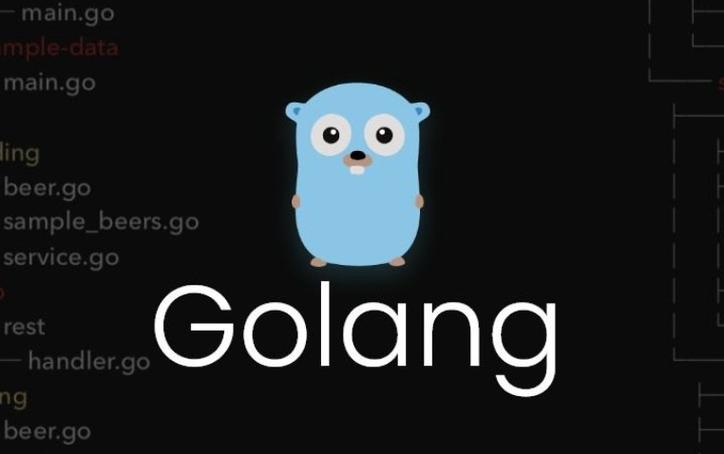Go语言机器学习算法实现FAQ
时间:2025-05-25 08:15:59 397浏览 收藏
Go 语言在机器学习领域虽然不如 Python 广泛,但其高效并发和性能优势在特定场景下非常突出。实现机器学习算法时需要注意数学运算精度、利用并发处理能力提高效率、自行实现或使用第三方库,以及算法优化等问题。本文通过线性回归、K-means 聚类和决策树算法的实现,探讨了在 Go 语言中实现机器学习算法的常见挑战和解决方案。
Go 语言在机器学习领域虽然不如 Python 广泛,但其高效并发和性能优势在特定场景下非常突出。实现机器学习算法时需注意:1) 数学运算精度问题,可能需要高精度数学库;2) 利用 Go 的并发处理能力提高算法效率;3) 由于库资源有限,可能需自行实现或使用第三方库;4) 算法优化,如选择初始聚类中心和最佳分割点。

在机器学习领域,Go 语言虽然不是最常用的语言,但其高效的并发处理能力和强大的性能表现使其在某些特定场景下大放异彩。今天我们就来聊聊在 Go 语言中实现机器学习算法的常见问题和解决方案。
Go 语言在机器学习领域的应用虽然不如 Python 那样广泛,但它在处理大规模数据和高并发场景下有着独特的优势。让我们从几个常见的机器学习算法入手,探讨一下在 Go 中实现这些算法时会遇到的问题,以及如何解决这些问题。
首先,我们来看看线性回归算法的实现。在 Go 中实现线性回归并不复杂,但需要注意的是,Go 语言没有像 Python 那样丰富的科学计算库,因此我们需要自己实现一些基本的数学运算。
package main
import (
"fmt"
"math"
)
func linearRegression(x, y []float64) (float64, float64) {
n := float64(len(x))
sumX, sumY, sumXY, sumX2 := 0.0, 0.0, 0.0, 0.0
for i := 0; i < len(x); i++ {
sumX += x[i]
sumY += y[i]
sumXY += x[i] * y[i]
sumX2 += x[i] * x[i]
}
slope := (n*sumXY - sumX*sumY) / (n*sumX2 - sumX*sumX)
intercept := (sumY - slope*sumX) / n
return slope, intercept
}
func main() {
x := []float64{1, 2, 3, 4, 5}
y := []float64{2, 4, 5, 4, 5}
slope, intercept := linearRegression(x, y)
fmt.Printf("Slope: %.2f, Intercept: %.2f\n", slope, intercept)
}实现线性回归时,我们需要注意的是浮点数运算的精度问题。在 Go 中,浮点数运算可能会因为舍入误差而导致结果不准确,因此在实际应用中,我们可能需要使用更高精度的数学库。
接下来,我们来看看 K-means 聚类算法的实现。K-means 算法在 Go 中实现时,需要注意的是如何高效地计算距离和更新聚类中心。
package main
import (
"fmt"
"math"
)
type Point struct {
X, Y float64
}
func distance(p1, p2 Point) float64 {
return math.Sqrt(math.Pow(p1.X-p2.X, 2) + math.Pow(p1.Y-p2.Y, 2))
}
func kMeans(points []Point, k int, maxIterations int) []Point {
centroids := make([]Point, k)
for i := 0; i < k; i++ {
centroids[i] = points[i]
}
for iteration := 0; iteration < maxIterations; iteration++ {
clusters := make([][]Point, k)
for _, point := range points {
minDistance := math.Inf(1)
clusterIndex := 0
for j, centroid := range centroids {
dist := distance(point, centroid)
if dist < minDistance {
minDistance = dist
clusterIndex = j
}
}
clusters[clusterIndex] = append(clusters[clusterIndex], point)
}
newCentroids := make([]Point, k)
for i, cluster := range clusters {
if len(cluster) == 0 {
newCentroids[i] = centroids[i]
continue
}
var sumX, sumY float64
for _, point := range cluster {
sumX += point.X
sumY += point.Y
}
newCentroids[i] = Point{sumX / float64(len(cluster)), sumY / float64(len(cluster))}
}
if areCentroidsEqual(centroids, newCentroids) {
break
}
centroids = newCentroids
}
return centroids
}
func areCentroidsEqual(c1, c2 []Point) bool {
if len(c1) != len(c2) {
return false
}
for i := 0; i < len(c1); i++ {
if c1[i].X != c2[i].X || c1[i].Y != c2[i].Y {
return false
}
}
return true
}
func main() {
points := []Point{
{1, 2},
{2, 3},
{3, 4},
{4, 5},
{5, 6},
}
centroids := kMeans(points, 2, 100)
fmt.Println("Final centroids:", centroids)
}在实现 K-means 算法时,我们需要注意的是如何选择初始聚类中心,这会直接影响算法的收敛速度和最终结果。在 Go 中,我们可以使用随机选择或 K-means++ 算法来选择初始中心。
最后,我们来看看决策树算法的实现。决策树算法在 Go 中实现时,需要注意的是如何高效地选择最佳分割点和处理分类问题。
package main
import (
"fmt"
"math"
)
type TreeNode struct {
Feature int
Threshold float64
Left, Right *TreeNode
Class int
}
func entropy(classCounts map[int]int) float64 {
total := 0
for _, count := range classCounts {
total += count
}
ent := 0.0
for _, count := range classCounts {
p := float64(count) / float64(total)
ent -= p * math.Log2(p)
}
return ent
}
func informationGain(X [][]float64, y []int, feature int, threshold float64) float64 {
leftClassCounts := make(map[int]int)
rightClassCounts := make(map[int]int)
for i, x := range X {
if x[feature] <= threshold {
leftClassCounts[y[i]]++
} else {
rightClassCounts[y[i]]++
}
}
totalEntropy := entropy(leftClassCounts)
for class, count := range rightClassCounts {
if _, exists := leftClassCounts[class]; !exists {
leftClassCounts[class] = 0
}
leftClassCounts[class] += count
}
totalEntropy += entropy(rightClassCounts)
nLeft := 0
nRight := 0
for _, count := range leftClassCounts {
nLeft += count
}
for _, count := range rightClassCounts {
nRight += count
}
return entropy(leftClassCounts) - (float64(nLeft)/float64(nLeft+nRight))*totalEntropy - (float64(nRight)/float64(nLeft+nRight))*totalEntropy
}
func buildTree(X [][]float64, y []int, depth int, maxDepth int) *TreeNode {
if depth >= maxDepth || len(unique(y)) == 1 {
return &TreeNode{Class: mostCommonClass(y)}
}
bestGain := -math.MaxFloat64
var bestFeature int
var bestThreshold float64
for feature := 0; feature < len(X[0]); feature++ {
for _, x := range X {
threshold := x[feature]
gain := informationGain(X, y, feature, threshold)
if gain > bestGain {
bestGain = gain
bestFeature = feature
bestThreshold = threshold
}
}
}
leftX, leftY, rightX, rightY := splitData(X, y, bestFeature, bestThreshold)
node := &TreeNode{Feature: bestFeature, Threshold: bestThreshold}
node.Left = buildTree(leftX, leftY, depth+1, maxDepth)
node.Right = buildTree(rightX, rightY, depth+1, maxDepth)
return node
}
func splitData(X [][]float64, y []int, feature int, threshold float64) ([][]float64, []int, [][]float64, []int) {
var leftX, rightX [][]float64
var leftY, rightY []int
for i, x := range X {
if x[feature] <= threshold {
leftX = append(leftX, x)
leftY = append(leftY, y[i])
} else {
rightX = append(rightX, x)
rightY = append(rightY, y[i])
}
}
return leftX, leftY, rightX, rightY
}
func unique(arr []int) []int {
keys := make(map[int]bool)
list := []int{}
for _, entry := range arr {
if _, value := keys[entry]; !value {
keys[entry] = true
list = append(list, entry)
}
}
return list
}
func mostCommonClass(arr []int) int {
counts := make(map[int]int)
for _, num := range arr {
counts[num]++
}
maxCount := 0
mostCommon := 0
for num, count := range counts {
if count > maxCount {
maxCount = count
mostCommon = num
}
}
return mostCommon
}
func main() {
X := [][]float64{
{1, 2},
{2, 3},
{3, 4},
{4, 5},
{5, 6},
}
y := []int{0, 0, 1, 1, 1}
tree := buildTree(X, y, 0, 3)
fmt.Println("Decision Tree:", tree)
}在实现决策树算法时,我们需要注意的是如何处理连续特征和离散特征,以及如何选择最佳分割点。在 Go 中,我们可以使用信息增益或基尼系数来选择最佳分割点。
总的来说,在 Go 语言中实现机器学习算法时,我们需要注意以下几点:
- 数学运算的精度问题:Go 语言的浮点数运算可能会因为舍入误差而导致结果不准确,因此在实际应用中,我们可能需要使用更高精度的数学库。
- 并发处理:Go 语言的并发处理能力非常强大,我们可以利用 goroutine 和 channel 来并行处理数据,提高算法的执行效率。
- 库的选择:Go 语言的机器学习库不如 Python 那样丰富,因此我们需要自己实现一些基本的数学运算,或者使用第三方库如
gonum等。 - 算法的优化:在实现算法时,我们需要注意算法的优化问题,例如如何选择初始聚类中心,如何选择最佳分割点等。
通过以上几个例子,我们可以看到在 Go 语言中实现机器学习算法虽然有一定的挑战,但通过合理的设计和优化,我们仍然可以实现高效的机器学习算法。希望这篇文章能为你提供一些有用的参考和启发。
今天关于《Go语言机器学习算法实现FAQ》的内容介绍就到此结束,如果有什么疑问或者建议,可以在golang学习网公众号下多多回复交流;文中若有不正之处,也希望回复留言以告知!
-
505 收藏
-
503 收藏
-
502 收藏
-
502 收藏
-
502 收藏
-
229 收藏
-
190 收藏
-
324 收藏
-
180 收藏
-
228 收藏
-
483 收藏
-
353 收藏
-
226 收藏
-
186 收藏
-
288 收藏
-
104 收藏
-
268 收藏
-

- 前端进阶之JavaScript设计模式
- 设计模式是开发人员在软件开发过程中面临一般问题时的解决方案,代表了最佳的实践。本课程的主打内容包括JS常见设计模式以及具体应用场景,打造一站式知识长龙服务,适合有JS基础的同学学习。
- 立即学习 543次学习
-

- GO语言核心编程课程
- 本课程采用真实案例,全面具体可落地,从理论到实践,一步一步将GO核心编程技术、编程思想、底层实现融会贯通,使学习者贴近时代脉搏,做IT互联网时代的弄潮儿。
- 立即学习 516次学习
-

- 简单聊聊mysql8与网络通信
- 如有问题加微信:Le-studyg;在课程中,我们将首先介绍MySQL8的新特性,包括性能优化、安全增强、新数据类型等,帮助学生快速熟悉MySQL8的最新功能。接着,我们将深入解析MySQL的网络通信机制,包括协议、连接管理、数据传输等,让
- 立即学习 500次学习
-

- JavaScript正则表达式基础与实战
- 在任何一门编程语言中,正则表达式,都是一项重要的知识,它提供了高效的字符串匹配与捕获机制,可以极大的简化程序设计。
- 立即学习 487次学习
-

- 从零制作响应式网站—Grid布局
- 本系列教程将展示从零制作一个假想的网络科技公司官网,分为导航,轮播,关于我们,成功案例,服务流程,团队介绍,数据部分,公司动态,底部信息等内容区块。网站整体采用CSSGrid布局,支持响应式,有流畅过渡和展现动画。
- 立即学习 485次学习
